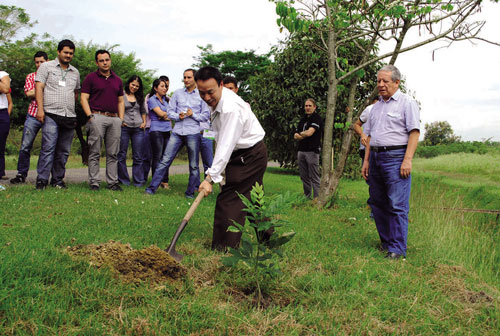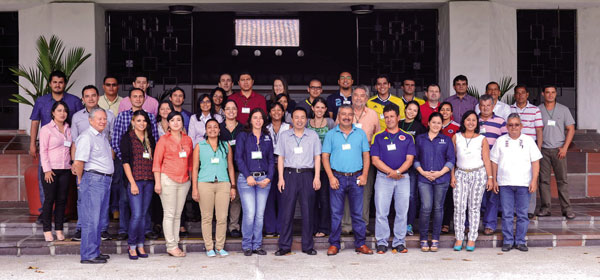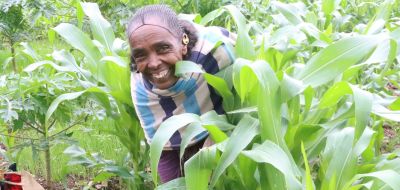CIAT and CIMMYT complete genetic analysis and plant breeding course in Colombia


By Luis Narro and Janeth Bolaños/ CIMMYT

CIMMYT’s office in Colombia, in collaboration with the International Center for Tropical Agriculture (CIAT), organized the Genetic Analysis and Plant Breeding course from 23-27 June. This course has been offered in Australia, China and Mexico and reviews plant breeding methods as well as quantitative genetics, development of linkage maps, quantitative trait loci (QTL) mapping, identification of genes with quantitative effect and epistasis, analysis of the interaction QTL x environment and integration of the knowledge of the action of genes in conventional breeding.
CIMMYT scientist Dr. Jiankang Wang, based in Beijing, facilitated the course with funding from the HarvestPlus Challenge Program. While the course has been offered 10 times, this is the first to include genetic analysis of vegetative propagation species, which are important for CGIAR centers working with cassava, potatoes and sweet potatoes.
Attending the course were 42 scientists (16 women and 28 men), representing public and private institutions from Colombia, Ecuador, Peru and the United States.
William Viera, head of the Fruit Program at Ecuador’s National Autonomous Institute of Agriculture and Livestock (INIAP), described the course as “very interesting. It includes molecular techniques that will allow us high level scientific studies. In our case, we will start a research project on tree tomatoes, tamarind and little oranges (lulo). With the tools and knowledge we gained, we will be able to develop the project in a positive way, and will identify genes that increase disease resistance and improve fruit quality.”
Rocío Silvestre, coordinator of improved materials for the gene bank at the International Potato Center (CIP), said, “The opportunity to interact with our colleagues from all around the world is a great contribution to our research programs. What we learned in the course will help us to design genetic maps, QTL mapping and morphological data analysis.”
Karen Viviana Osorio, research assistant from the Colombian agribusiness Semillas Valle S.A., thanked CIMMYT for sharing the new technology and biotechnology tools currently used in the agriculture sector. Osorio noted that CIMMYT has “helped people who work in agricultural research to access updated and high-quality information. We have made the most of this course in our daily activities.” Bodo Raatz, a molecular geneticist from CIAT’s Bean Improvement Program, described the course as “what we need to know about improvement and genetic studies. It includes all we need to map QTL.”

CIAT’s Rice, Tropical Forages and Bean programs will benefit from information on the latest advances in the development of elements that facilitate their work with quantitative traits. “With this course we have been able to identity some needs from the national programs, and they have been provided with free access tools for genetic improvement,” said Luis Augusto Becerra, a molecular geneticist from CIAT’s Cassava Improvement Program.
There are tentative plans to organize another course in collaboration with CIP.
